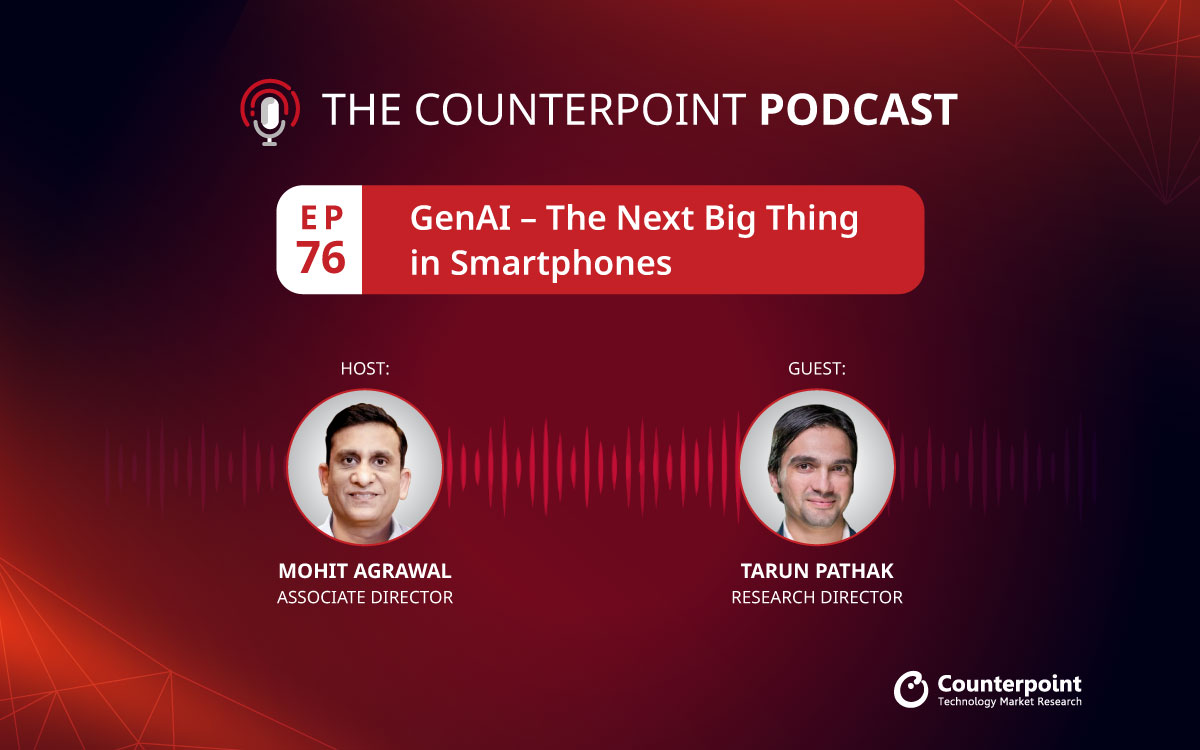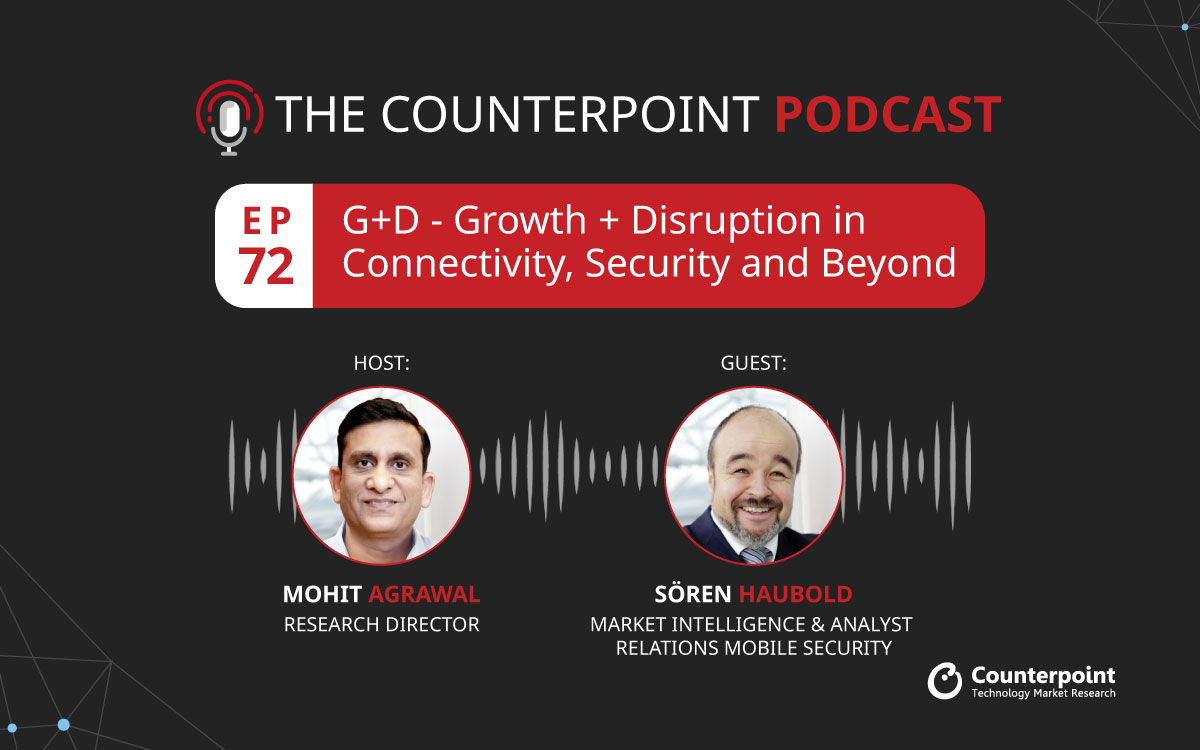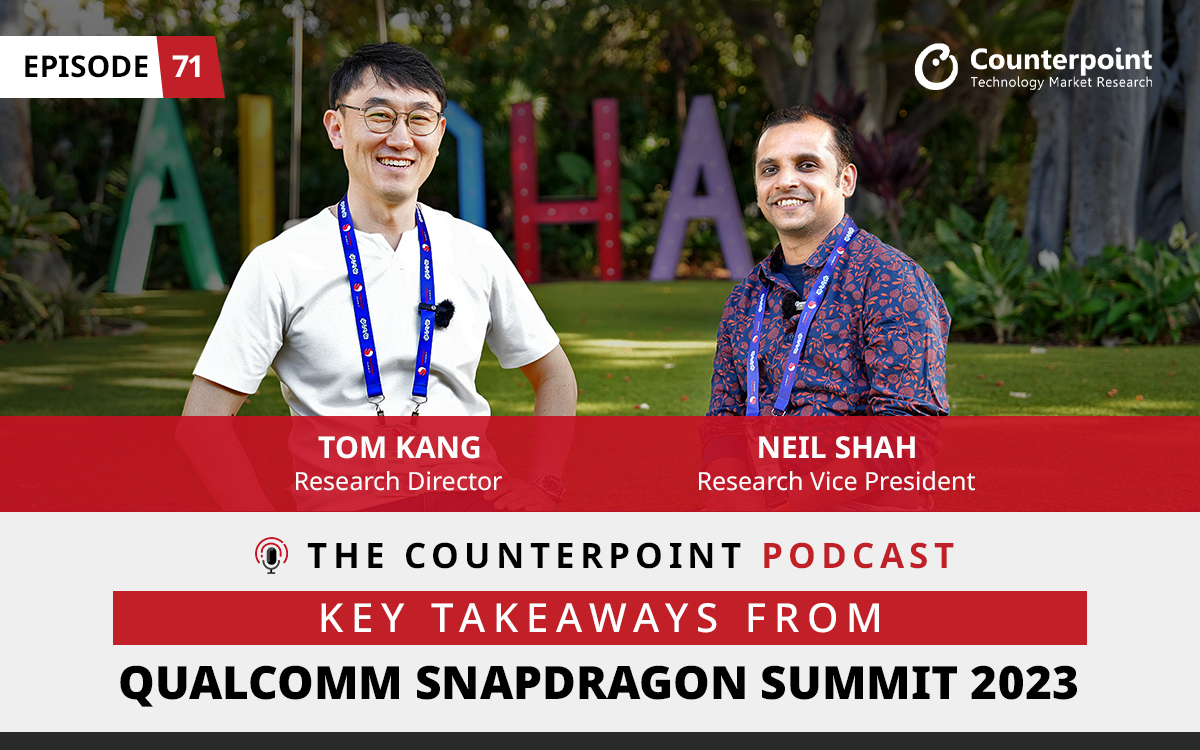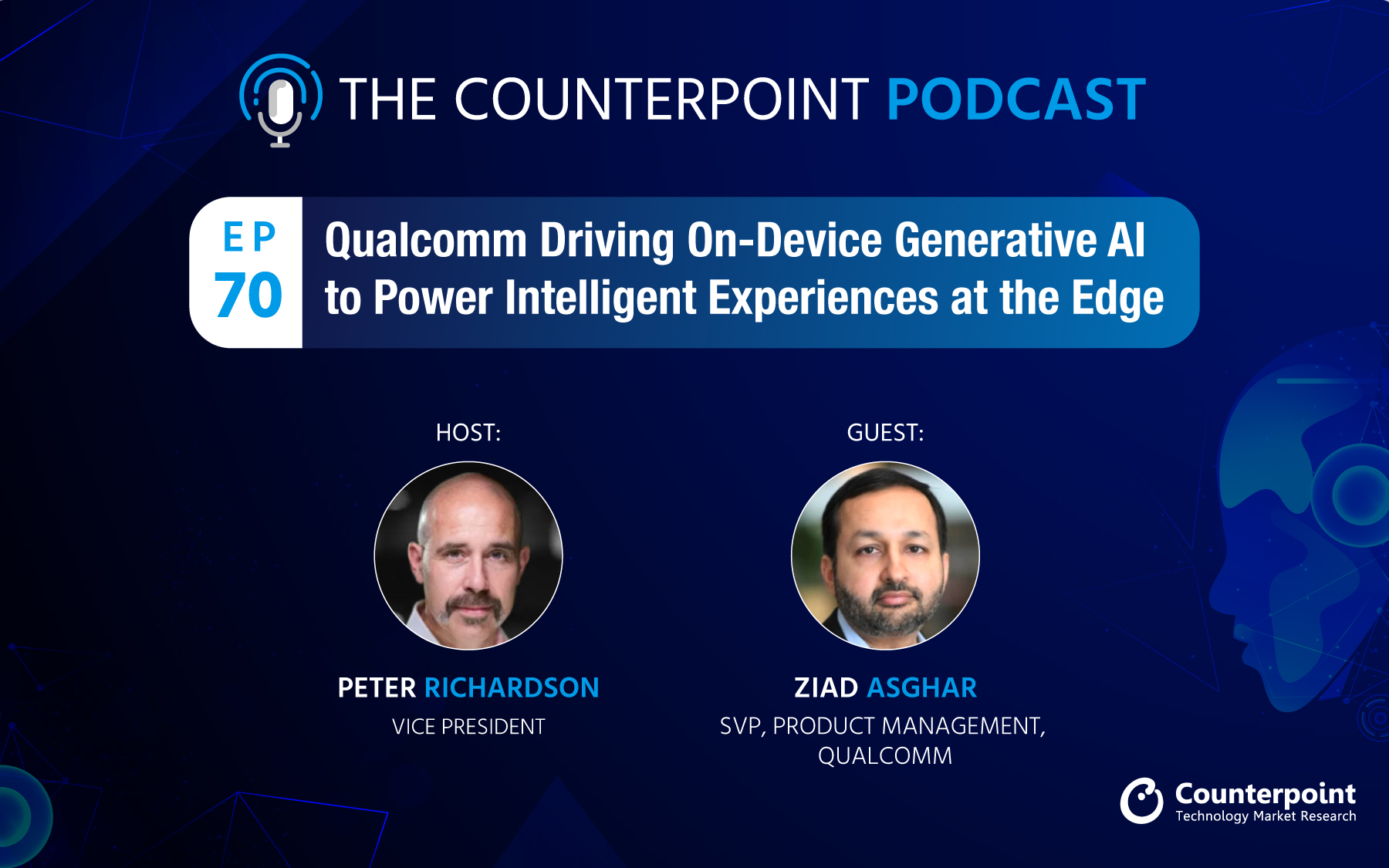IoT connectivity is starting to play a crucial role in connecting devices to the internet. From remotely controlling smart home appliances and devices like smart meters to even monitoring industrial machines, IoT applications are proliferating. With the stellar rise of AI, edge computing is enabling even faster decision making.
In this latest episode of ‘The Counterpoint Podcast’, host Mohit Agrawal is joined by Kenta Yasukawa, Co-Founder and CTO of Soracom, a global cellular IoT connectivity provider. The conversation dives into Soracom’s focus areas, recent achievements, the landscape of cellular IoT connectivity, AI, and the company’s vision for the future of IoT.
Click the play button to listen to the podcast
You can read the podcast transcript here.
Key Takeaways from the podcast discussion:
Soracom’s value proposition
• Soracom offers cellular LPWAN and satellite connectivity solutions, enabling customers to connect their devices to the cloud.
• It acts as a mobile virtual network operator (MVNO) but offers additional value-added services to simplify customers’ IoT journeys.
• It helps in accelerating time-to-market by providing a platform with features like:
o AWS cloud environment
o Offloading device processing tasks to the cloud
o Device management and security enhancements
Competitive advantage
• Soracom focuses on being an IoT platform, with connectivity as one of its key features.
• It offers a wide range of functionalities compared to pure connectivity providers.
• Soracom enables data transmission using simple protocols like UDP packets, which helps devices reduce battery consumption and data usage.
• The company also helps in extracting payload data and calling cloud-side APIs for seamless cloud integration.
• Soracom collaborates with MNOs to leverage its capabilities and extend them to MNO customers.
AI and the future of IoT connectivity
• AI is expected to play an important role in IoT advancements.
• Soracom is integrating generative AI which will allow data analysis directly on the platform. It will empower users to gain insights from time-series sensor data including trends and outliers without requiring a data analyst.
• AI can become the missing piece in IoT to make real-time decisions based on data and take appropriate actions.
• AI analysis can also help fleet operators gain valuable insights into fleet behavior and optimize network operations accordingly.
Analyst Takeaways:
• Soracom was tagged as a “Leader” in Counterpoint’s connectivity management platform rankings. It has been making strategic moves recently like listing on Tokyo’s growth stock exchange and receiving investments from Suzuki.
• Suzuki is strong in a few markets like India and this partnership should strengthen Soracom’s position in the auto industry. Automotive is the largest and most lucrative market vertical for IoT. Cubic Telecom, a competitor of Soracom, focuses on the automotive industry and has received significant investment from Softbank.
• AI presents a great opportunity for IoT connectivity players and Soracom’s platform is uniquely positioned to take advantage of AI in analytics, operations management, and fleet management.
• The IoT connectivity opportunity is huge, but the connectivity providers grapple with falling ARPUs and value chain fragmentation. Qualcomm Aware and Telenor’s Complete platform are trying to remove some of the friction points in the value chain. The IoT connectivity providers will need to get into partnerships with device and application providers to enable end-to-end IoT solutions.
Podcast Chapter Markers
01:05 – Kenta Yasukawa introduces himself and offers a brief view of what Soracom does.
02:07 – Yasukawa talks about the recent listing on the growth market of the Tokyo Stock Exchange and investment from Suzuki Ventures.
05:56 – Yasukawa on what differentiates Soracom from its competitors.
08:17 – Yasukawa talks about the current challenges holding back the growth in the IoT market.
09:51 – How can the problem of value chain fragmentation in IoT be solved? Yasukawa shares some insights.
12:59 – Yasukawa on the trend of MNOs hiving out their IoT connectivity businesses, and how it could impact the connectivity market.
14:42 – Yasukawa talks about AI in IoT and IoT connectivity while also giving some use cases.












